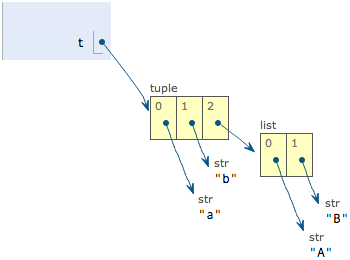Python实现的最近最少使用算法
本文实例讲述了Python实现的最近最少使用算法。分享给大家供大家参考。具体如下:
# lrucache.py -- a simple LRU (Least-Recently-Used) cache class
# Copyright 2004 Evan Prodromou <evan@bad.dynu.ca>
# Licensed under the Academic Free License 2.1
# Licensed for ftputil under the revised BSD license
# with permission by the author, Evan Prodromou. Many
# thanks, Evan! :-)
#
# The original file is available at
# http://pypi.python.org/pypi/lrucache/0.2 .
# arch-tag: LRU cache main module
"""a simple LRU (Least-Recently-Used) cache module
This module provides very simple LRU (Least-Recently-Used) cache
functionality.
An *in-memory cache* is useful for storing the results of an
'expe\nsive' process (one that takes a lot of time or resources) for
later re-use. Typical examples are accessing data from the filesystem,
a database, or a network location. If you know you'll need to re-read
the data again, it can help to keep it in a cache.
You *can* use a Python dictionary as a cache for some purposes.
However, if the results you're caching are large, or you have a lot of
possible results, this can be impractical memory-wise.
An *LRU cache*, on the other hand, only keeps _some_ of the results in
memory, which keeps you from overusing resources. The cache is bounded
by a maximum size; if you try to add more values to the cache, it will
automatically discard the values that you haven't read or written to
in the longest time. In other words, the least-recently-used items are
discarded. [1]_
.. [1]: 'Discarded' here means 'removed from the cache'.
"""
from __future__ import generators
import time
from heapq import heappush, heappop, heapify
# the suffix after the hyphen denotes modifications by the
# ftputil project with respect to the original version
__version__ = "0.2-1"
__all__ = ['CacheKeyError', 'LRUCache', 'DEFAULT_SIZE']
__docformat__ = 'reStructuredText en'
DEFAULT_SIZE = 16
"""Default size of a new LRUCache object, if no 'size' argument is given."""
class CacheKeyError(KeyError):
"""Error raised when cache requests fail
When a cache record is accessed which no longer exists (or never did),
this error is raised. To avoid it, you may want to check for the existence
of a cache record before reading or deleting it."""
pass
class LRUCache(object):
"""Least-Recently-Used (LRU) cache.
Instances of this class provide a least-recently-used (LRU) cache. They
emulate a Python mapping type. You can use an LRU cache more or less like
a Python dictionary, with the exception that objects you put into the
cache may be discarded before you take them out.
Some example usage::
cache = LRUCache(32) # new cache
cache['foo'] = get_file_contents('foo') # or whatever
if 'foo' in cache: # if it's still in cache...
# use cached version
contents = cache['foo']
else:
# recalculate
contents = get_file_contents('foo')
# store in cache for next time
cache['foo'] = contents
print cache.size # Maximum size
print len(cache) # 0 <= len(cache) <= cache.size
cache.size = 10 # Auto-shrink on size assignment
for i in range(50): # note: larger than cache size
cache[i] = i
if 0 not in cache: print 'Zero was discarded.'
if 42 in cache:
del cache[42] # Manual deletion
for j in cache: # iterate (in LRU order)
print j, cache[j] # iterator produces keys, not values
"""
class __Node(object):
"""Record of a cached value. Not for public consumption."""
def __init__(self, key, obj, timestamp, sort_key):
object.__init__(self)
self.key = key
self.obj = obj
self.atime = timestamp
self.mtime = self.atime
self._sort_key = sort_key
def __cmp__(self, other):
return cmp(self._sort_key, other._sort_key)
def __repr__(self):
return "<%s %s => %s (%s)>" % \
(self.__class__, self.key, self.obj, \
time.asctime(time.localtime(self.atime)))
def __init__(self, size=DEFAULT_SIZE):
# Check arguments
if size <= 0:
raise ValueError, size
elif type(size) is not type(0):
raise TypeError, size
object.__init__(self)
self.__heap = []
self.__dict = {}
"""Maximum size of the cache.
If more than 'size' elements are added to the cache,
the least-recently-used ones will be discarded."""
self.size = size
self.__counter = 0
def _sort_key(self):
"""Return a new integer value upon every call.
Cache nodes need a monotonically increasing time indicator.
time.time() and time.clock() don't guarantee this in a
platform-independent way.
"""
self.__counter += 1
return self.__counter
def __len__(self):
return len(self.__heap)
def __contains__(self, key):
return self.__dict.has_key(key)
def __setitem__(self, key, obj):
if self.__dict.has_key(key):
node = self.__dict[key]
# update node object in-place
node.obj = obj
node.atime = time.time()
node.mtime = node.atime
node._sort_key = self._sort_key()
heapify(self.__heap)
else:
# size may have been reset, so we loop
while len(self.__heap) >= self.size:
lru = heappop(self.__heap)
del self.__dict[lru.key]
node = self.__Node(key, obj, time.time(), self._sort_key())
self.__dict[key] = node
heappush(self.__heap, node)
def __getitem__(self, key):
if not self.__dict.has_key(key):
raise CacheKeyError(key)
else:
node = self.__dict[key]
# update node object in-place
node.atime = time.time()
node._sort_key = self._sort_key()
heapify(self.__heap)
return node.obj
def __delitem__(self, key):
if not self.__dict.has_key(key):
raise CacheKeyError(key)
else:
node = self.__dict[key]
del self.__dict[key]
self.__heap.remove(node)
heapify(self.__heap)
return node.obj
def __iter__(self):
copy = self.__heap[:]
while len(copy) > 0:
node = heappop(copy)
yield node.key
raise StopIteration
def __setattr__(self, name, value):
object.__setattr__(self, name, value)
# automagically shrink heap on resize
if name == 'size':
while len(self.__heap) > value:
lru = heappop(self.__heap)
del self.__dict[lru.key]
def __repr__(self):
return "<%s (%d elements)>" % (str(self.__class__), len(self.__heap))
def mtime(self, key):
"""Return the last modification time for the cache record with key.
May be useful for cache instances where the stored values can get
'stale', such as caching file or network resource contents."""
if not self.__dict.has_key(key):
raise CacheKeyError(key)
else:
node = self.__dict[key]
return node.mtime
if __name__ == "__main__":
cache = LRUCache(25)
print cache
for i in range(50):
cache[i] = str(i)
print cache
if 46 in cache:
print "46 in cache"
del cache[46]
print cache
cache.size = 10
print cache
cache[46] = '46'
print cache
print len(cache)
for c in cache:
print c
print cache
print cache.mtime(46)
for c in cache:
print c
希望本文所述对大家的Python程序设计有所帮助。

